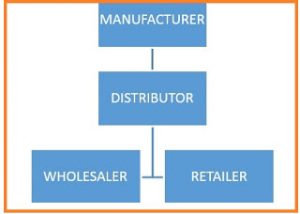How to Develop Business Plan Financial Analysis: Step-by-step Approach – This is how to develop your Business Plan Financial Analysis: Step-by-step Approach So, are you a start-up who is worried about how to put some figures together as a business plan? And, perhaps, you do not know the most important segment of the whole show, we will soon let you know that. Now, read more about How to Develop Business Plan Financial Analysis: Step-by-step Approach
As a matter of fact, this post is very important to me because many of you out there think good grammar is all that is a good business plan. The annoying thing here is that most people like this are ignorant of their ignorance about things of the business plan. Therefore, they pose as knowing, only to find out that they don’t know anything about it. If you are in this shoe, please calm down and learn how to assemble your business plan financial analysis segment here.
Your Business Plan:
Table of Contents
Just as I hinted above, your business plan grammatical presentations are all conceptual until you start filling in the figures. Get this right, now. Other sections of your business plan may be very interesting to read, but they don’t mean a thing if you can’t justify your business with good figures on the bottom line. This is what you do in a separate segment of the business plan – the financial analysis segment.
In fact, the financial section of your business plan is one of the most essential components of the plan. This section is what your investors or bank are looking at to grant you the loan you desire. Not your grammar! Read more about How to Develop Business Plan Financial Analysis: Step-by-step Approach here.
Learn How to start:
Get a Spread Sheet ready.
Even if you need to work offline, get a spreadsheet ready. That is where you will do the homework and necessary permutations to arrive at your desired values.
Start with a sales forecast.
Now, start with your turnover projections. So, set up a spreadsheet projecting your sales over the number of years you want. Make it simple in a few years. Some of you ask for a 10-year projection which is much more than an economic cycle. That is not too fine.
Again, list out your products or services and create a column for them. Then decide whether you want to generate weekly, monthly or quarterly reports that will give you your yearly reports. Set them up in different rows. Now, think about which variables should be for columns or rows. What I mean is that you are free to decide whether the products should be on the columns or the rows; and whether the weekly/monthly/quarter report should be on the columns or rows. Read more about How to Develop Business Plan Financial Analysis: Step-by-step Approach here.
Your Spreadsheet Setting:
Overall, your setting should be one that projects unit sales, and unit pricing, and that multiplies units times price to calculate sales. And, then another for the cost of sales. So, in like manner a setting for unit costs, and another that multiplies units times unit cost to calculate the cost of sales which are direct costs. You need all of these because you will need to calculate gross margin which is sales less cost of sales. Can we go forward?
Create your expenses budget:
This will help you understand how much it’s going to cost you to actually make the sales you have forecast. Remember that there are three types of expenses here and they must be separated.
- The direct cost of sales or production must be separated
- Fixed/asset costs must also be separated
- To be separated also are the admin expenses.
- Read more about How to Develop Business Plan Financial Analysis: Step-by-step Approach here.
These separations will enable you to know, the cost of production/sales when deducted from the turnover or output values. Fixed cost are to be capitalized and depreciated accordingly. While the admin expenses are to be written off from the profit or loss account, which is also called Income Statement. If you mismatch these figures you will get many things wrong. Ask for help here.
Generate the Income projections on How to develop Business Plan Financial Analysis: Step-by-step Approach:
In fact, this is your pro forma profit and loss statement. It contains details of the forecasts for the coming years needed. Now, use the figures you got from your turnover, cost of sales and expenses forecast here. The formula is;
- Turnover lest the cost of sales = gross margin;
- Gross margin fewer expenses, which now includes interest, depreciation, and taxes = net profit.
- This is How to Develop Business Plan Financial Analysis: Step-by-step Approach here.
You are through with this! Now deal with assets and liabilities.
The Balance Sheet:
This is where you will deal with the assets and liabilities. Assets are both fixed (equipment and tools) and current assets – cash, accounts receivable and inventory. And liabilities include Short term liabilities – debts/accounts payable and outstanding loans due within a year; and long-term liabilities. Here also is where you deal with investors’ funds, proprietors’ fund,s and capital. You need to know that a business being a distinct legal individual from the ownership sees the proprietor’s capital as a liability. Is that not making sense? Many who fail in business are those who ignore this fact.
Breakeven analysis.
This is where your business’s expenses match your sales or service volume. It’s a point of no profit or loss considering the variable expenses. However, in planning, you have to assume many costs as a variable for this purpose. At least you should be able to know if you can renew your rent after one year or able to replace some warn-out assets in three years. Read more about How to Develop Business Plan Financial Analysis: Step-by-step Approach here.
Therefore, where your business is viable, at a certain point on this analysis your overall revenue will exceed your overall expenses, including interest. In fact, this analysis shows the potential investors that they are investing in a fast-growing business with an exit strategy. This can be supported with a Project Pay Back analysis.
Generate a cash-flow statement On How to develop Business Plan Financial Analysis: Step-by-step Approach.
This statement shows how your physical cash moves in and out of the business. Variables needed to generate this include; your sales forecasts – incomes and expenditure, balance sheet items, and other assumptions. Please, you re expected to make realistic assumptions here. Say, a good ratio for how many of your invoices will be paid in cash. And those payable in 30 days, 60 days, 90 days, and so on. Read more about How to Develop Business Plan Financial Analysis: Step-by-step Approach here.

Financial History:
This is strictly for exiting businesses that have a financial history. So, if you are using your business plan to attract investment or get a loan, this part of the financial section becomes important. In fact, this is a summary of your business’s financial behavior from the start to the present. As a matter of fact, some loan applications include this. In addition, there may also be the need to support these assertions with relevant documents like bank account statements, history of loan records, and lists of assets and liabilities. Do you need help?
Get help from us On How to develop Business Plan Financial Analysis: Step-by-step Approach:
At Complete Full Marks Consultants Ltd, our entrepreneurship development and support services are superb. They include taking care of your business start-up processes; generating your business ideas, and registration at C.A.C. Then, comes our business planning and feasibility analysis services, with various templates available for sale.
We also run entrepreneurship training schemes. In fact, recently we re involved with SMEDAN in the training of CBN/NIRSAL MFB/BOI AGSMEIS and other loan applicants. In addition, our Accounting and Auditing, and tax management services are also available. We re Chartered Accountants. If you enjoyed the post sign by clicking on YES or NO Read more about How to Develop Business Plan Financial Analysis: Step-by-step Approach here.
HOW TO CONTACT US:
This is simple. Just call +234 8034347851, or 09053130518 (office). Or Email: [email protected] or [email protected].
RECOMMENDED RELATED TOPICS TO VISIT ON How to develop Business Plan Financial Analysis: Step-by-step Approach:
FOR CAC INCORPORATIONS:
- Company Registration Gets Better with Nigeria CAMA 2020
- Current Incorporation services you need @ CAC
- CAC Certified True Copy Incorporation Documents
- Current Changes on Company Registration for CAC 2020 CAMA
- Post Incorporation Services
- Sole ownership Director company in Nigeria
FOR BUSINESS PLAN & FEASIBILITY ANALYSIS
- Get your Business Plan feasibility analysis here
- Export business plans
- Agro Business Plans
- Processing/Milling Business Plans
- Loan Business Plans
- Read more about How to Develop Business Plan Financial Analysis: Step-by-step Approach here.
FURTHER RECOMMENDATIONS FOR TIPS ON BUSINESS GROWTH
- How to avoid business failure
- Business Growth Strategies
- How to develop a solid marketing strategy after COVID-19 Pandemic
- Series of business ideas
Finally, these recommended posts are to help you search for more business information on How to Develop Business Plan Financial Analysis: Step-by-step Approach. As a matter of fact, they are to equipped for your business plans financial analysis. So, click on some of them and you are on your part for a breakthrough. You had these because Completefmc cares. Thanks for reading through How to Develop Business Plan Financial Analysis: Step-by-step Approach here.
If you enjoyed this post, can you now bookmark it to share with your contacts? And, please click to follow us on our Facebook handles. Thank you.

Deacon Anekperechi Nworgu, a seasoned economist who transitioned into a chartered accountant, auditor, tax practitioner, and business consultant, brings with him a wealth of industry expertise spanning over 37 years.



